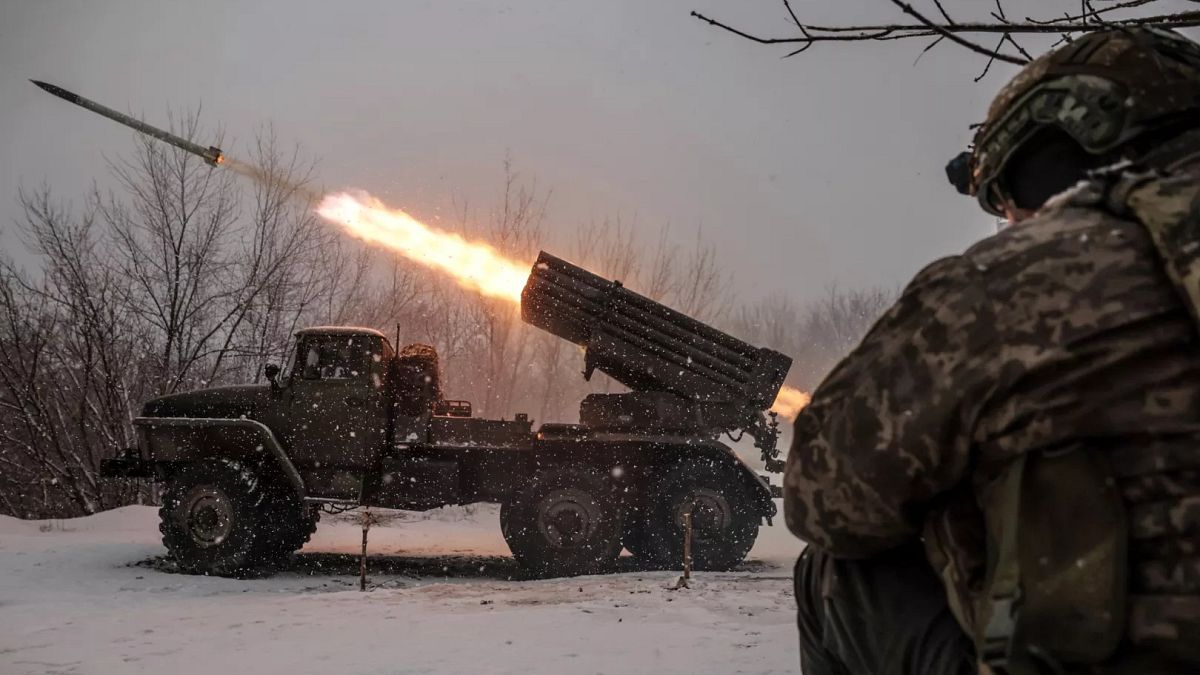Europe
Ukraine and Russia release drone footage as US envoy arrives in Kyiv

The US-Ukraine Conflict: A Delicate Balance of Power and Diplomacy
The Ukraine conflict continues to dominate global headlines as the US intensifies its diplomatic efforts to de-escalate tensions. In a significant development, the US Special Representative for Ukraine, Keith Kellogg, arrived in Kyiv on Wednesday to hold meetings with Ukrainian officials, including President Volodymyr Zelenskyy. His visit comes at a critical juncture, as the conflict approaches its fourth year, with no clear end in sight. The timing of Kellogg’s visit is particularly notable, as it follows recent remarks by former President Donald Trump, who controversially blamed the Zelenskyy government for Russia’s invasion. Trump’s statement has sparked widespread criticism and raised questions about the US’s stance on the conflict. Kellogg, however, struck a more diplomatic tone, emphasizing the importance of Ukraine’s sovereignty and independence. “This is a chance to have good potential negotiations,” he stated, signaling Washington’s commitment to maintaining dialogue.
Escalating Violence: Drone Attacks and Military Engagement
While diplomatic efforts continue, the war on the ground shows no signs of slowing down. On Thursday, the State Border Guard Service of Ukraine released video footage showcasing a successful drone attack carried out by its elite “Phoenix” unit. The operation targeted Russian military vehicles in the Kramatorsk district of the Donetsk region, resulting in the destruction of eight military trucks and 11 additional vehicles. The footage highlights Ukraine’s growing reliance on asymmetric warfare tactics, particularly the use of drones, to counter Russia’s conventional military might.
Yet, the conflict is far from one-sided. The Russian Ministry of Defence also released footage of its Buk-M2 air defence system engaging and destroying a Ukrainian aerial target. Moscow claimed that its forces had successfully targeted Ukrainian army positions equipped with Giatsint-S howitzers, suggesting that Russia remains capable of inflicting significant damage on Ukrainian forces. The tit-for-tat exchanges underscore the brutal and unrelenting nature of the war, with both sides suffering heavy losses as the conflict drags on.
Keith Kellogg’s Mission: Listening and Negotiating
Kellogg’s visit to Kyiv has been framed as an opportunity for the US to engage directly with Ukrainian leaders and gauge their concerns. “Part of my mission is to sit and listen and say, ‘What are your concerns?’” he remarked, signaling a willingness to understand Ukraine’s perspective. His words reflect the US’s commitment to supporting Ukraine, though the extent of that support remains a subject of debate. Kellogg also echoed Trump’s sentiment that the war could have been avoided if Trump were still in office, describing the conflict as “egregious” and asserting that Trump “understands human suffering.”
Despite these comments, Kellogg’s primary focus appears to be on fostering dialogue, as evidenced by his statement about the potential for “good potential negotiations.” His visit follows recent talks between senior US and Russian diplomats in Saudi Arabia, which notably excluded Ukraine and its European allies. While these discussions have been shrouded in secrecy, they suggest that the US and Russia may be exploring alternative avenues for de-escalation, potentially bypassing Kyiv and its European partners.
The Blame Game: Trump’s Controversial Remarks
Donald Trump’s recent comments blaming Ukraine for the Russian invasion have added fuel to the fire, drawing sharp criticism from Kyiv and its supporters. Trump’s assertion that the conflict would not have occurred under his presidency has been dismissed by many as revisionist history, given the events that transpired during his time in office. Nevertheless, his remarks highlight the polarized nature of the debate surrounding the war’s origins and the role of external actors.
For its part, Ukraine has repeatedly emphasized that the responsibility for the invasion lies squarely with Russia, while accusing the West of not doing enough to prevent the conflict in the first place. Zelenskyy’s government has also called for greater support from its allies, particularly in terms of military aid and economic sanctions against Russia. The diplomatic row over blame underscores the complex web of interests and alliances at play in the conflict.
The Human Cost and Global Implications
Beyond the geopolitical maneuvering, the ongoing war in Ukraine has had a devastating impact on civilians. The destruction of infrastructure, the displacement of millions, and the rising death toll have created a humanitarian crisis that shows no signs of abating. The international community has been forced to grapple with the wider implications of the conflict, including its impact on global food and energy markets, as well as the potential for further destabilization in Eastern Europe.
As the conflict enters its fourth year, the path forward remains uncertain. While diplomatic efforts continue, the escalating violence on the ground suggests that a peaceful resolution is still out of reach. The US’s role in mediating the conflict will be critical in the coming months, as Washington seeks to balance its support for Ukraine with the need to avoid direct confrontation with Russia. For now, the people of Ukraine remain caught in the crossfire, their futures hanging precariously in the balance.
In conclusion, the Ukraine conflict presents a complex and multifaceted challenge, with no easy solutions in sight. The interplay of military action, diplomatic efforts, and political rhetoric continues to shape the narrative of the war, while the human cost remains a stark reminder of the stakes involved. As the international community works to find a way out of this quagmire, the focus must remain on the people of Ukraine, whose lives have been irreparably altered by this protracted and devastating conflict.


















